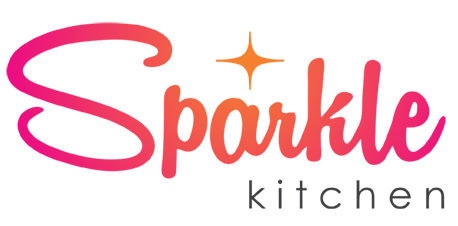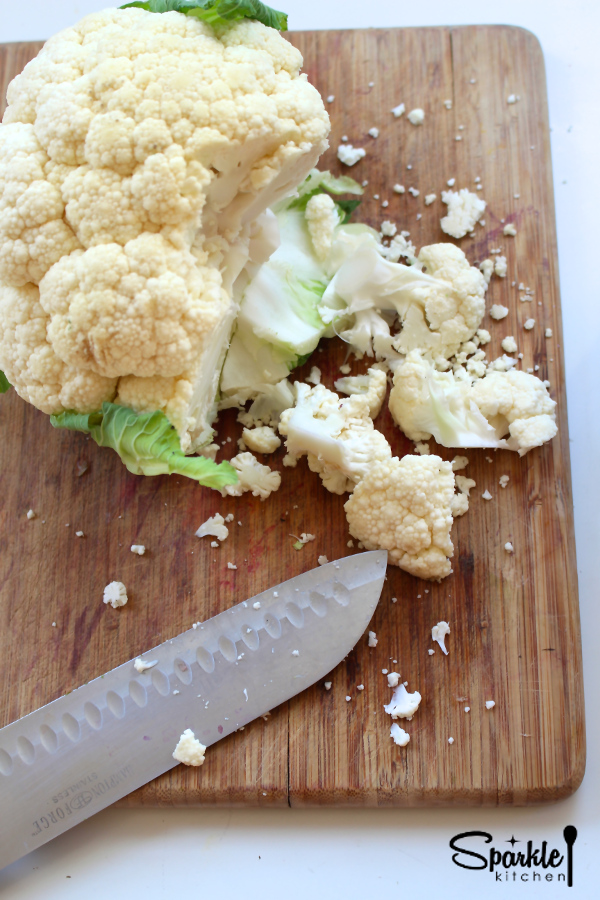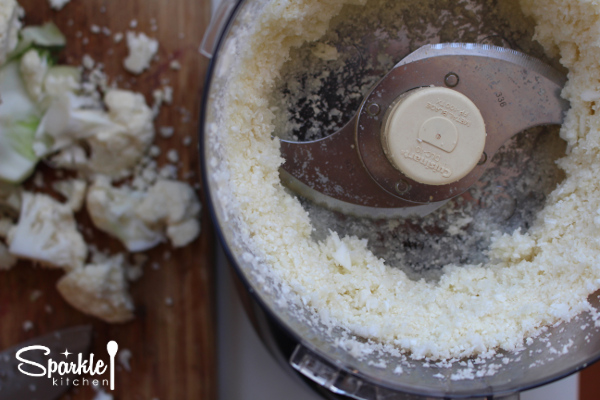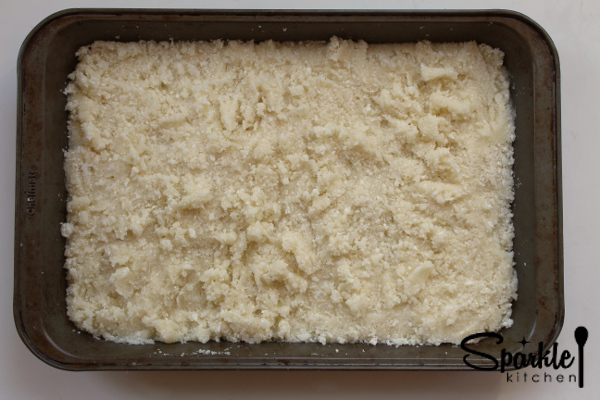I’m so thrilled to share a fabulously informative article by my friend Alex of DigPrimal.com! Alex is an active food DIY-er with a nutrient rich paleo approach. As an anesthesiology resident, she taps into her science knowledge to create helpful resources for others wanting to get to the root of their health problems. Alex shares her real food recipes and insights for natural living.
In this article Alex gets down to the diet principles and answers many questions people often have when they hear paleo. I love her approach to diet as a lifestyle, focusing on the whole body. Every single body is different and we all have to do what makes us feel our best.
What is (Nutrient Rich) Paleo?
I love paleo. But I think it can get a bit confusing. Do you eat grass fed dairy or not? Do you include certain legumes in your diet or not? Is eating paleo synonymous with eating a high-protein or low-carb diet? And is there even a “right” way of doing it at all?
What follows is my explanation for how I think about paleo and how I subsequently use these principles to make lifestyle and dietary decisions.
The fundamental principle is that I focus on nutrient density to guide my food choices and focus on living a lifestyle that augments—and doesn’t deplete—that baseline of health. With this basic concept in mind, I think the details end up being relatively straightforward.

Paleo As A Lifestyle:
My understanding of paleo is that it is a lifestyle…that means you do it in such a way that you could happily do it for the rest of your foreseeable future.
That means there’s absolutely no starvation, deprivation, calorie-counting, or “dieting” that takes place. Sure, the idea is that you change your food choices to be healthier but it’s also perfectly acceptable to allow for the things you want as well.
As an exercise, try googling “paleo pizza”. You’ll see countless versions of pizza to make at home. Not in a cooking mood? There are store-bought and restaurant-made paleo-like versions you can buy. Let’s say you decide that you need to indulge in regular ol’ pizza once every so often to be able to stick with paleo the other 99% of the time. Then let me emphatically say that doing that doesn’t make you “not paleo” or “not a good paleo-er” (insert whatever guilt-ridden-diet-following-mumbo-jumbo you or anyone else is trying to say). In a world of crash-dieting and 100 calorie snack packs, I think a long term outlook on health—even with some imperfections—is a beautiful thing.
The mind frame in paleo, in my opinion, is to do away with the emotional rollercoaster so often seen accompanying contemporary “diets” and to focus on fueling your body with the most nutrient-rich foods you can get your hands on. Learning exactly what that means for your mind and body lies at the heart of this wonderful journey of living paleo!
With all that said, I’d like to delve into the nitty-gritty by discussing everything that you CAN (and are encouraged to) eat.
“Yes” (Please!) Foods:
1. All vegetables. With all the vitamins and minerals present along with minimal anti-nutrients (aka: compounds that make the vitamins and minerals in some foods less bio-available to you) make pretty much all veggies a go for a lot of people. As with all foods, however, there is the potential for someone to have more specific sensitivities to certain vegetables. Vegetable sensitivities are a more “advanced” paleo topic, however, so we’ll leave that discussion for another day…if you’re curious in the meantime, The Paleo Mom has great scientific articles on the subject.
2. All fruit. Fruit can be a huge help when someone is switching from a Standard American Diet to the paleo because fruit can really offset sugar cravings while providing you with beneficial vitamins and minerals. While you’ll occasionally see discussions in the paleo world about how much fruit is ok to eat, my take on the matter is that you can partake in nearly unlimited fruit as long as you don’t have blood sugar regulation problems and don’t allow your fruit intake to displace other healthy food choices.
3. Muscle meats from healthy animals fed their appropriate diet is the paleo ideal. Scientifically, it’s been shown that grass-fed beef/bison and pasture-raised pork/chicken/turkeys have higher levels of Vitamins A, D, K2 as well as CLA…these are all things we need to build healthy bodies and to further absorb the nutrients we eat. However, conventionally raised meats also contain these beneficial compounds (albeit at a lower concentration) so if there’s a choice between eating conventional meats or no meat at all, I’ll always choose the former. There are real considerations, such as price and availability, that can make getting grass-fed meat more difficult…the best thing to do is to make the best choices you can and relax about what you can’t change.
4. Organ meats from healthy animals fed their appropriate diets. Organ meats are starting to be discussed more and more in the paleo community but even now, they are severely undervalued nutritional options. Organs perform all the functions that animals need to live (including humans!). To make these functions occur, animals need cofactors…and this almost always means a vitamin or mineral. It makes sense then that organ meats contain the highest quantities of vitamins and minerals in an animal and we can reap all those benefits by eating organs such as liver, heart, kidneys, etc. I know, I know, this isn’t something we’re used to but it’s definitely something that grows on you. Don’t worry, eating organ means doesn’t mean you have to deal with the “ick-factor”…I often buy my ground offal in a nicely packaged container just like all my other meats. Best of all, you can find countless recipes on the internet of how to prepare organ meats (and even recipes that disguise the taste for those who don’t like the idea!) that make eating organ meats positively delicious. I personally love liver, so I make it at home for myself like this. (That post also goes into detail on how I hide it from my liver-texture-hating husband.)
5. Bone broth is constantly discussed in the paleo diet for good reason: animal bones are a reservoir of nutrients and vitamins and, just like in organ meats, there are easy and delicious ways to incorporate all those health benefits into your life. It would take paragraphs to describe all the reasons you should be drinking bone broth so I’ll refer to this well-written article by The Paleo Mom again. Bone broth is so amazing and yummy that you’ll be hard-pressed to find a paleo blog that doesn’t include their method for making it…here’s mine!
6. Fermented foods are a staple in most paleo kitchens. They provide you with beneficial probiotics and enzymes while the process of fermentation allows the vitamins and minerals to become more bio-available (read: easier to absorb). There are tons of choices out there, depending on your taste buds and your food tolerances. Most people are able to enjoy sauerkraut, kimchi, coconut milk kefir, water kefir, ginger ale, and kombucha. For those of your who decide/have decided to incorporate dairy into your paleo choices, cow/goat milk kefir can be a delicious way to get in your fermented foods.
7. There is a great deal of variation on the approach to dairy in the paleo world. Some people are so intolerant to dairy (lactose intolerance, casein intolerance) that they choose not to use any forms of dairy at all. Others choose to include forms of dairy that are less likely to be allergenic…this includes butter, ghee, and heavy cream. The last camp of people are usually people who have determined that they see no ill effects of eating dairy and therefore include butter, ghee, heavy cream, as well as minimally-processed whole milk (goat being easier to digest than cow milk). Almost everyone who includes dairy in their diets agrees that getting products from grass-fed, happy cows is the best but, as with the meats above, it’s important to do the best you can and don’t sweat the rest.
8. Seafood—both fish and shell-fish—is loaded with nutritional goodness. Seafood can provide you healthy fats, omega 3’s, selenium, iodine, and incredibly bio-available forms of protein. If you eat fish with bones in them (sardines, canned salmon), you’ll be getting all the benefits you get from bone broth in the fish too! Opinions differ but most people agree that wild-caught fish has the highest mineral, vitamin value while avoiding the contamination you can find in conventional fish.
9. Nuts and seeds are considered to be good additions to a paleo way of eating…as long as they’re enjoyed in moderation. Reasons for keeping nuts in moderation in the diet includes a discussion about optimal fatty acid ratios and anti-nutrient considerations. Some people choose to omit nuts and seeds entirely and compensate by focusing on other sources of healthy fats and nutrients.
10. One thing that sets the paleo lifestyle from other modern philosophies is the strong focus on including high-quality fats in the diet. The main theory behind not avoiding fats is that the paleo lifestyle tends to be low-inflammatory which greatly lowers the opportunity for plaque (cholesterol) accumulation in the arteries, not to mention that heat stable fats are less likely to be oxidized into particles that build up in the arteries. Nearly all types of high quality fats are included in paleo, including “ancestral” fats such as lard and tallow. If you’re new to incorporating fats into your meals, may I suggest frying up some bacon and sauteing veggies in the bacon fat (yum!).
“Yes” Activities; Beyond The Food:
Now that we’ve figured out all the things you can eat, let’s return to the idea that paleo is a “lifestyle” and not simply a diet. While we do talk about food an awful lot in this space, referring to paleo as a lifestyle also implies that what you do outside of the kitchen really matters. You’ll notice that there’s a lot of talk in the paleo-sphere about getting outside, living an active lifestyle, and building good support systems.
Intuitively, it makes sense that our bodies can’t be expected to function well in isolation to everything that surrounds us. Scientifically, there is much supporting evidence that our hormonal milieu (melatonin, leptin, ghrelin, insulin, and so on!) is strongly dependent on our movement, interaction with the sun, and—maybe most importantly—our emotional status. Whatever your motivation is for following such advice, I truly appreciate being a community where I am continuously reminded to consider and examine all aspects of my life, not just what I put in my mouth.
Finally, let’s cover what we choose not to include in the paleo way of eating. I dislike paleo descriptions that start by giving you big list of things not to eat and send you on your way…but since we’ve established all the wonderful things you can eat, however, we can get on to this last part.
“No” (Thank You!) Foods:
1. Nearly everyone in the paleo community will choose not to eat gluten-containing grains (wheat, barley, rye, etc). While “gluten” has become a popular, well-known term, it is just one of the compounds in certain grains that act as anti-nutrients…these compounds resist degradation in your digestive tract and block the absorption of other vitamins and minerals in your gut. An easy way to think about it is to consider how grains disseminate their fruit. Animals eat grains and the “dispose” of them at another location…it is the intention of grains to pass through the digestive tract intact so that they can grow at this new spot. It is not so much that grains are “bad” then but it’s simply that we are able to get all the nutrients they contain more easily from a variety of other foods (see “yes” foods above!). (Please note that this is just one simple way of describing the problems with grains…I could also mention that they are a commonly cited culprit in food intolerances and can increase inflammation in the body.)
2. Some people in the paleo-sphere choose not to eat any grains at all while others occasionally partake of gluten-free grains such as rice, quinoa, and buckwheat. This choice, like dairy, simply depends on your level of sensitivities. Still, they aren’t the most nutrient dense food choices you can make and to make them healthier requires some work (check out how I prepare my rice in bone broth and sprout buckwheat).
3. Legumes have similar anti-nutrient considerations as gluten-containing grains…they are simply difficult for the human body to digest and there are better ways to get the same nutrients. Personally, I do treat legumes that you can eat with the skin (like peas and green beans) differently than ones you can’t because nutritionally, I believe they are more similar to nuts and seeds.
4. Paleo folks tend to avoid damaged fats. This usually means that they use heat-stable fats for cooking (coconut oil, butter, ghee, bacon grease, duck fat, tallow, lard…anything solid at room temperature) and the rest for preparing food that won’t get heated (olive or sunflower oil on salads, etc.) so that the non-heat-stable oils won’t get oxidized. This is very hard to do when eating out since most restaurants tend to cook with oils like canola oil (liquid at room temperature). The frequency that you choose to expose yourself in this is up to you, but it’s just an important fact to realize.
5. Low fat dairy is not often seen included in paleo food lists. This is because the fat in dairy contains Vitamins A, D and K2…these are compounds that are needed to be able to absorb and utilize calcium you would potentially get from the dairy products. Without them, you’re not likely to get much from those dairy products besides caloric intake.
6. Processed sugars are generally avoided in paleo. Eating whole, minimally-processed foods generally helps minimize sugar intake drastically and becoming nutrient sufficient through proper nutrition goes a long way for diminishing sugar cravings. Addicted to sugar? I sure was. Be patient with yourself…habits and nutrient statuses don’t change over night.
Lastly, let’s cover lifestyle choices we try to avoid when embracing paleo.
“No” Activities:
Doing the opposite of the activities we covered in the “yes” section–staying up too late, not being active, stressing out–has the potential to negate some of the benefits of the great food choices you make. This is because these activities can cause the disregulation of hormones that govern energy levels, satiety, and proper cell signaling (especially when it comes to gastrointestinal tract mucosal cells and immune cells).
Moving On:
As you can see, there’s a lot to nutrient-rich paleo! But in the end, it’s really just about enjoying your life and fueling your body with the most nutrient-dense foods available to you.
My version of paleo looks like this…what will yours look like?






